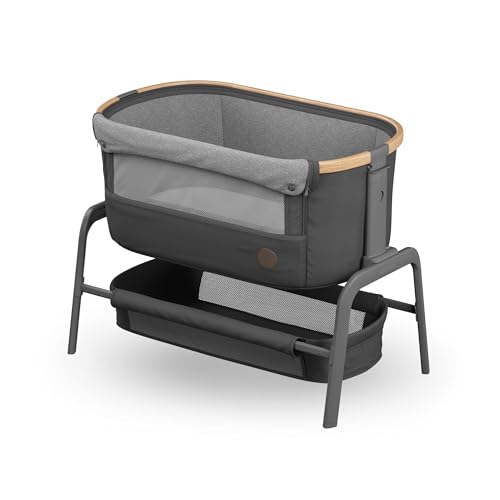Tots and Cots: A Comprehensive Guide for Parents
When it comes to making sure a safe and comfortable sleeping environment for babies and young children, the options parents make-- varying from cribs to cots-- can significantly impact their wellness. Today's post dives deep into the complexities of choosing the best sleeping arrangements for tots, emphasizing security, design, performance, and how these choices evolve as a child grows.
Understanding Tots and Cots
Tots generally describe children, especially toddlers aged between 1 to 3 years, while cots are the sleeping plans particularly created for babies and toddlers. The suitable sleeping equipment for this age includes various types of cots, cribs, and young child beds.
Kinds of Cots
Numerous styles exist to meet the diverse requirements of both parents and children. Below is a list laying out the most typical kinds of cots available:
Standard Crib
- A traditional crib is designed for infants and generally includes sides that can be gotten used to different heights.
Convertible Crib
- This type of crib can convert into a toddler bed, daybed, or full-sized bed as the kid grows, making it a long-term investment.
Portable Crib
- Also referred to as travel cots, these are lightweight and quickly collapsible, ideal for traveling or smaller sized living areas.
Co-Sleeper
- A co-sleeper crib connects to the side of the parents' bed, allowing for simple gain access to while guaranteeing the baby has a separate and safe sleeping space.
Young child Bed
- A toddler bed is a little bed that looks like a basic bed however is designed particularly for young children, generally featuring safety rails.
Mini Crib
- Mini cribs are smaller than basic cribs, making them a great choice for tight spaces, but they appropriate for babies only.
Security Considerations
Ensuring security is paramount when choosing a cot for a child. Here are crucial safety standards parents must think about:
- Check for CPSC Certification: Ensure that the cot follows the Consumer Product Safety Commission (CPSC) requirements.
- Prevent Drop-Sides: Cots with drop-sides have been linked to safety dangers, and the most recent security regulations forbid them.
- Use a Firm Mattress: A company mattress reduces the threat of suffocation and ought to fit snugly within the cot.
- Keep Bedding Simple: Use a fitted sheet and avoid pillows, comforters, and stuffed animals that can present suffocation risks.
- Follow Weight and Age Guidelines: Ensure the kid has actually not exceeded the cot's weight limit and is still within the recommended age.
Transitioning from a Cot to a Toddler Bed
The transition from a cot to a young child bed can be an emotional turning point for both parents and kids. Here are steps to ease the shift:
Timing
Choosing when to transition can be subjective, but it's typically recommended to make the switch in between 18 months and 3 years, based on factors like:
- Physical Ability: If the child is climbing out of the cot.
- Potty Training: Consider transitioning if the child is potty training and needs much easier gain access to.
- Habits: Exhibiting indications of maturity, such as following instructions or revealing a desire for independence.
Tips for Making the Transition Smooth
- Involve Your Child: Let the kid select their brand-new bed linen or bed design to impart enjoyment about the change.
- Keep Routine Consistent: Maintain the child's bedtime routine to provide comfort throughout this duration of modification.
- Discuss the Change: Discuss the shift to a young child bed positively, making it sound like an excellent adventure.
- Precaution: Place the bed versus the wall or usage bed rails to prevent falling throughout sleep.
Selecting the Right Bed
When picking a young child bed, moms and dads need to consider elements like:
- Height: Low-profile beds are perfect for young children who may fall out throughout sleep.
- Toughness: Ensure the bed can withstand active play along with sleep.
- Design and style: Choose a design that matches the kid's room and is attracting the child.
Choosing the best cot for your youngster can be an overwhelming process, but comprehending the choices readily available, essential safety factors to consider, and the best timing for transitioning to a toddler bed can make this journey simpler for moms and dads. Investing effort and time into these decisions will ensure that your child has a safe, comfortable, and nurturing sleep environment.
Frequently asked questions
1. What is the distinction in between a cot and a crib?
- A cot is normally a smaller bed designed for more youthful young children, while a crib is a bigger bed that is normally ideal for babies up to 3 years of ages.
2. When should I move my child from a crib to a toddler bed?
- The transition time is generally in between 18 months and 3 years; this change is based upon the child's physical capabilities and behavioral indications.
3. How can I ensure my child is safe while sleeping?
- Constantly abide by security standards, utilize a company mattress with a basic bed linen plan, and keep track of the cot's weight limitation.
4. What should I do if my child tries to climb out of the cot?
- If your child is climbing out, it might be time to think about transitioning to a young child bed to avoid falls.
5. Can I utilize the very same mattress when transitioning?
- Usually, it is best to replace the crib mattress with one that is particular to the toddler bed. continue reading this fits comfortably and sticks to safety requirements.
By thinking about these elements, parents can model healthy sleep habits and supply their kids with a secure environment that promotes peaceful sleep. Buying quality sleeping arrangements will contribute to the kid's total advancement and happiness.

